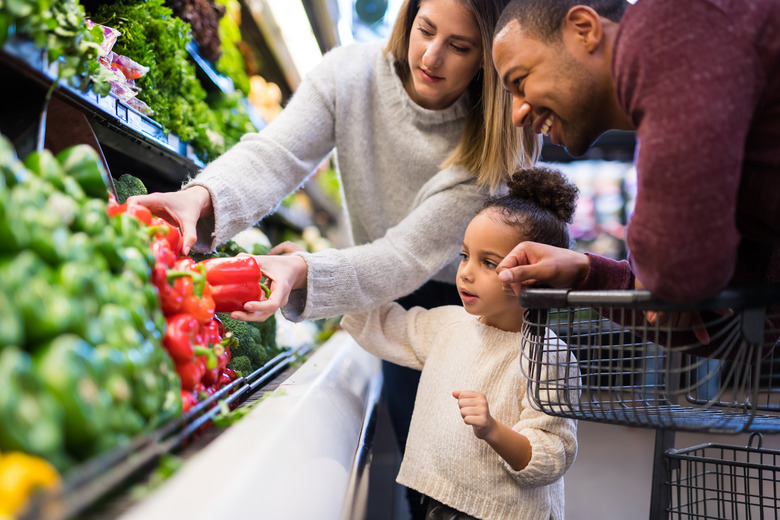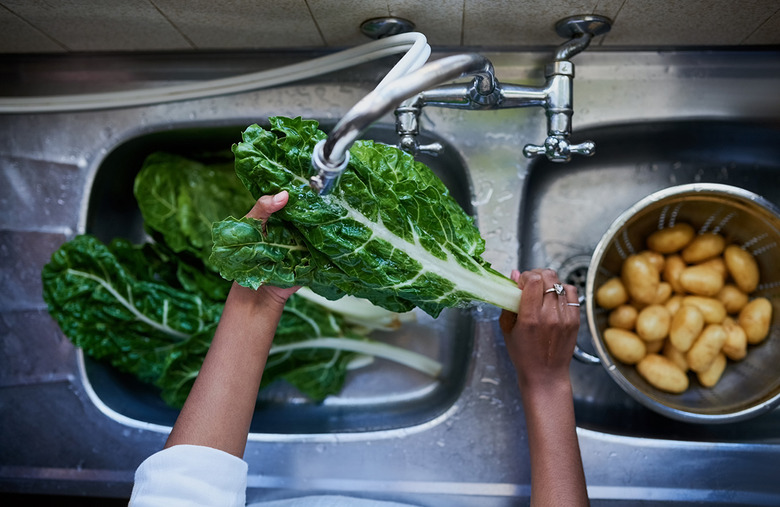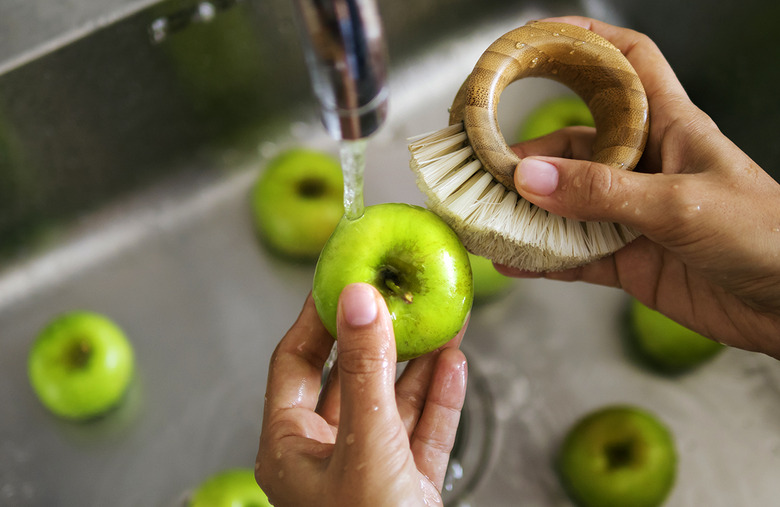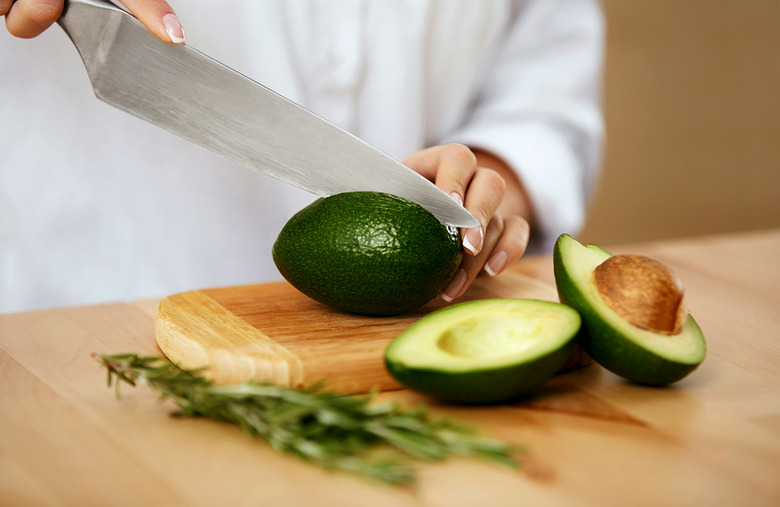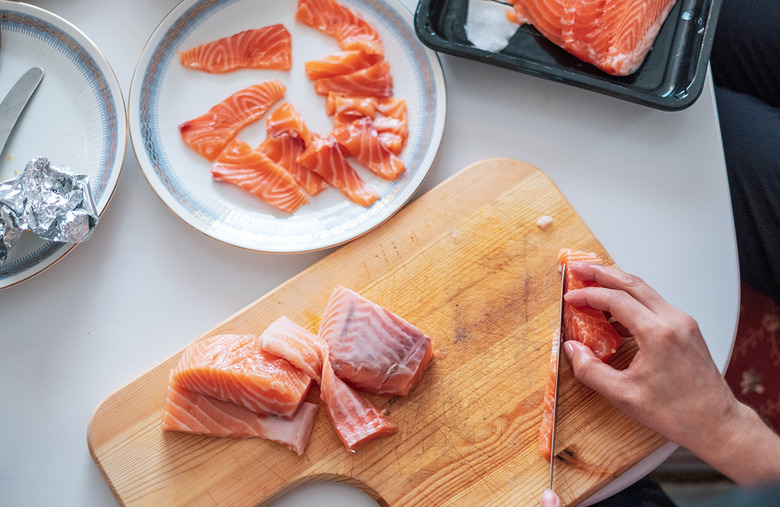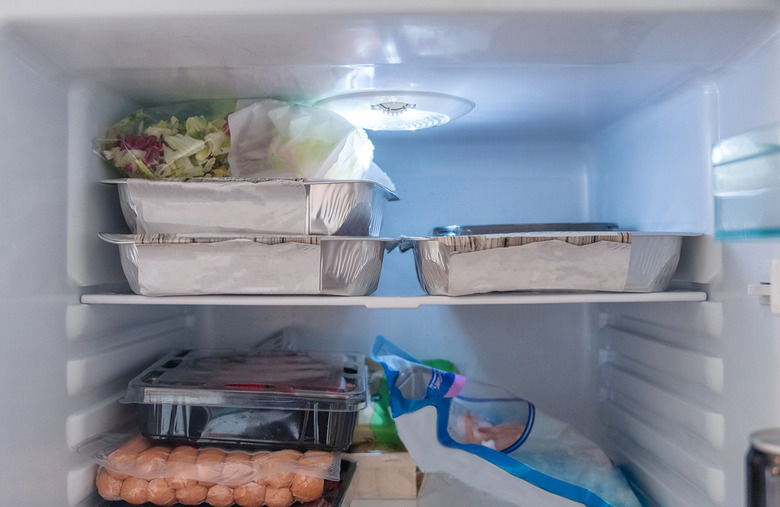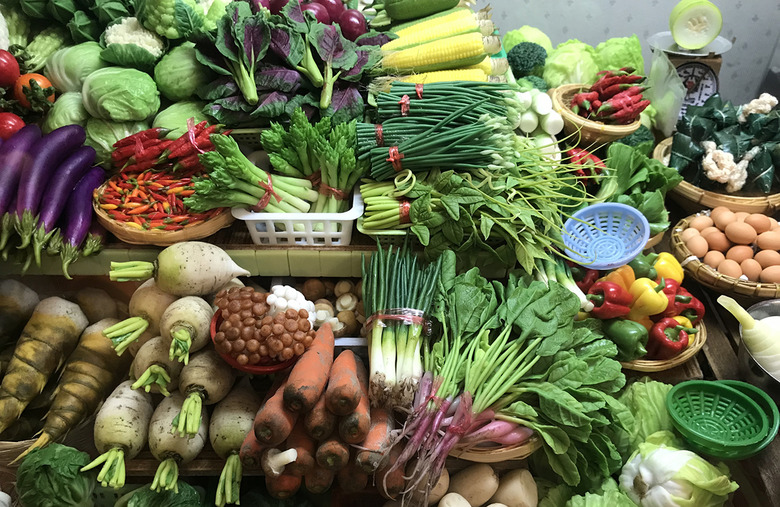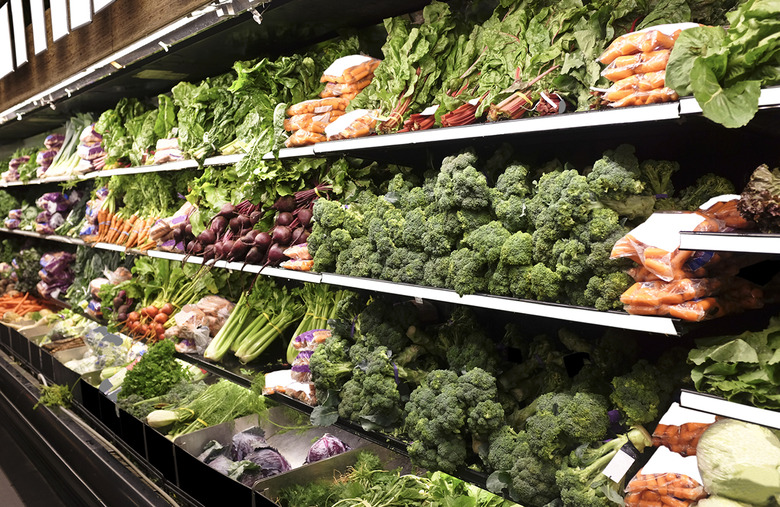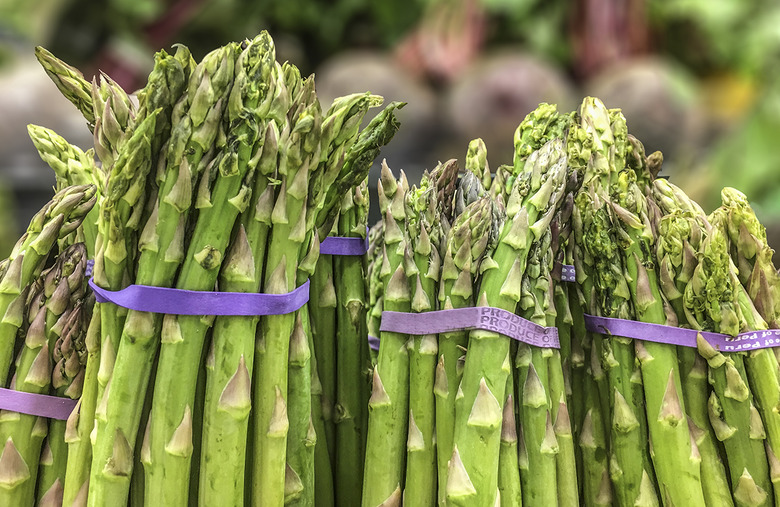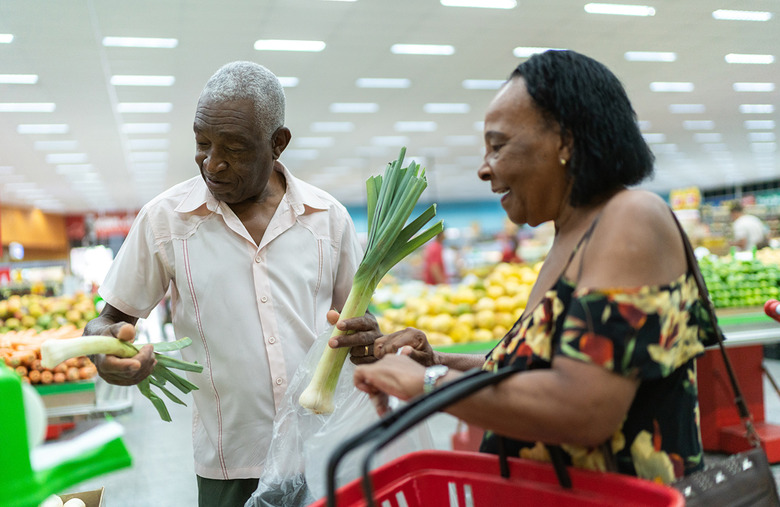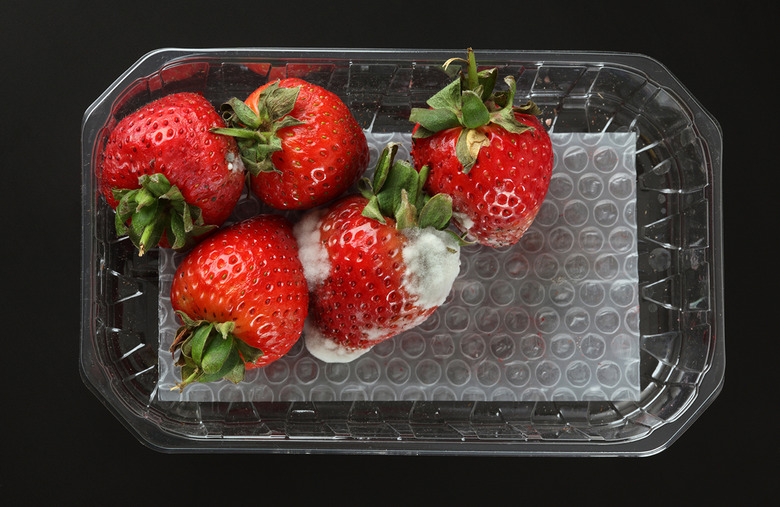12 Ways Store-Bought Produce Can Make You Sick
Buying fresh produce from the grocery store is a great way to adopt healthy habits, such as cooking at home and snacking on fruits and vegetables. And with a few simple tricks for saving on groceries, you can get high-quality, in-season produce at a fraction of the cost. However, grocery stores are rife with germs. People often touch produce with dirty hands and put it back on shelves, along with other rude grocery store behaviors. This can contaminate food with bacteria and viruses — and that's not the only site of potential contamination your produce encounters. Here are 12 ways you could get sick from eating store-bought produce and tips to stay safe.
You don’t wash your produce
Many hands, containers and other objects come into contact with grocery store produce before it hits the shelves. And even after it sits in the store and ends up in your cart, the potential for exposure to bacteria is ongoing. A sampling conducted by Reuse This Bag showed that grocery store produce hosted 1,940 colony-forming units of bacteria per square inch. Ingesting these bacteria puts you at risk for food poisoning or other illness. One of the best tactics for avoiding food poisoning is to always wash your produce before you eat it. Some analyses show that even "pre-washed" lettuce and other items need to be washed.
You wash produce incorrectly
Using proper procedure to wash your produce is crucial to ensure that your rinsing process is as effective as possible. The FDA provides advice for how to best do this, beginning with washing your hands before you start. Then, rinse your produce gently under warm water (without using soap) and wipe away any dirt. For firm produce that won't bruise, use a clean vegetable brush. Then pat the produce dry with a clean cloth or paper towel. This final drying process can help to remove any leftover germs.
You cut through the skin without washing first
There are some pieces of produce, such as avocados and cantaloupes, that you do not eat the skin of. You might not think to rinse these fruits and vegetables before you cut them open, but you should. A 2018 report from the Food and Drug Administration found that over 17% of avocado skins were contaminated with listeria. The FDA recommends rinsing produce before you peel it so dirt and bacteria aren't transferred from the knife onto the flesh of the fruit or vegetable.
You only use one cutting board
Using only one cutting board for both meat and vegetables is one of the most common cooking mistakes. Cross-contamination from raw meat is a real risk, even in your own kitchen. Bacteria from raw meat can get caught in the grooves of a cutting board — so even if you wash it with soap and water after you use it to cut meat, the cutting board could still make you sick. A more effective way to sanitize a cutting board is to soak it in a bleach solution. But your best bet while cooking is to use a separate board entirely.
You store your food incorrectly
Unless you know the best ways to store all of the items on your grocery list, you're probably storing your food incorrectly. Not all fresh produce belongs in the fridge — and the ones that do belong there should be placed thoughtfully. Storing produce on a shelf or drawer beneath raw meat, for instance, can put you at risk for food poisoning due to drippage. Always make sure to store raw meat on the bottom shelf and other items, especially produce, on a top shelf.
You react to pesticides
The controversy around pesticides is pretty complex, but here's the bottom line: Pesticides, which are used to keep pests, weeds, mold, insects and fungi away from produce on the farm, can sometimes remain on fruits and vegetables even after they go through processing and after you rinse them at home. According to a report by The Center for Ecogenetics and Environmental Health at the University of Washington, there may be health risks from long-term exposure, specifically for high-risk populations such as infants and pregnant mothers. These risks include a potentially higher risk of ADD/ADHD for 8- to 15-year-olds or increased risk of chronic diseases if you experience heavy pesticide exposure due to an occupational hazard. However, the Environmental Protection Agency evaluates pesticides on a rolling basis, meaning they are always re-evaluating and assessing pesticides for their safety. The EPA says it "is confident that the fruits and vegetables our children are eating are safer than ever."
You have a food allergy
Some people may experience a severe allergy to a food in the produce aisle. There are two ways this can occur. One is that a person has an allergy directly in response to a fruit or vegetable, such as onions or bananas. Another possibility is a lesser-known condition called Oral Allergy Syndrome (OAS) or Pollen Fruit Syndrome (PFS). For people with OAS, allergies to pollen cause an allergic reaction after eating raw fruits and vegetables. This is due to a similarity in the proteins in pollen and those in certain fruits and vegetables. According to the American Academy of Allergy, Asthma & Immunology (AAAAI), 50 to 75% of adults allergic to birch tree pollen experience this condition. People who have OAS may need to cook certain fruits and vegetables before eating. Allergies can develop later in life, so ensure you are aware of the signs you may have developed a food allergy as an adult.
The produce was contaminated during an outbreak
Outbreaks of infections such as salmonella, E. coli and listeria have been increasing in frequency over the past decade, according to data from the Centers for Disease Control and Prevention. Products linked to outbreaks are recalled after the connection between the illnesses and the product is made, but if you don't pay attention to recall notices, you may inadvertently consume an item that could get you sick. Additionally, investigations into the source of an outbreak can take weeks or even months. Keep up to date with notices and produce recalls issued by the FDA and CDC. The CDC also recommends you immediately report any illnesses to your local or state health department.
The produce was imported from a country where contamination rates are high
Much of the produce you see at the store has been imported, either from elsewhere in America or abroad. Some of the Gala apples you see at the store, for instance, could be imported from New Zealand, and asparagus is sometimes shipped from Peru. The New York Times reports that data from the Agriculture Department's Economic Research Service showed as of 2016, 53.1% of fresh fruit was imported, a large increase from the 23% in 1975. Importing produce has its pros and cons, affecting pesticide use, availability and cost. One aspect is that some countries' produce may be more susceptible to contamination.
The ice at the store is contaminated
Some grocery stores display certain items on ice. While it's likely the ice was clean when it was deposited, carelessness from other shoppers could introduce contaminants into the ice and, as a result, your produce. Be mindful not to trust that the water at the grocery store keeps all produce clean.
The produce was contaminated during transportation and processing
Produce processing varies by company, but it typically includes washing, sorting and trimming, sometimes with the addition of slicing or shredding. If contaminated water is used in any of these processes, bacteria may remain on the surface of the produce, according to the CDC. Contamination of containers used to transport produce may also occur for a variety of reasons, such as if a truck used to transport livestock is not adequately washed before it's later loaded with produce. To minimize your risk of ingesting these contaminants, make sure to wash your fruits and vegetables and take steps to prevent food poisoning.
The produce has gone bad
Eating fruits and vegetables past their prime can cause some health problems. Sometimes, eating overripe produce causes nothing more than indigestion. However, other times, food that has grown mold or a film of bacteria can give you food poisoning if you eat it. Don't let your fruits and vegetables sit too long in your fridge — here's how to tell what's still good to eat and what may have gone bad.
More from The Daily Meal:
Genius Hacks Every Costco Shopper Should Know
Grocery Items That Are Worth the Splurge
You're Storing These Groceries All Wrong
The Best Grocery Store in Every State
A Month-to-Month Guide for Seasonal Produce
